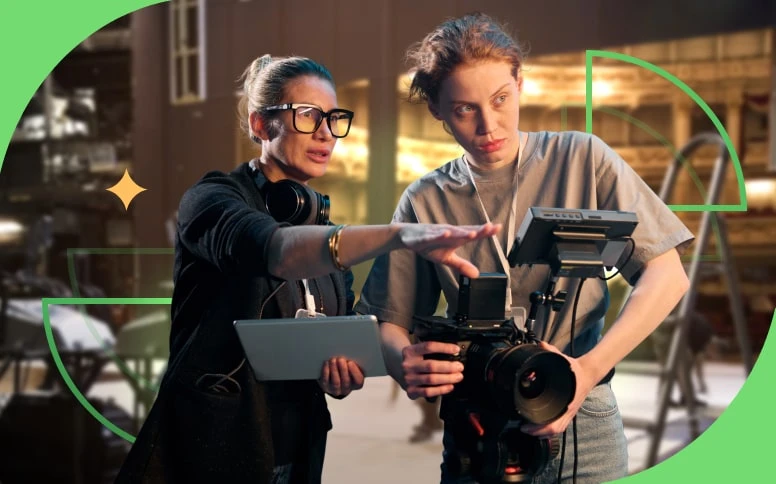How To Take Meeting Notes Effectively (and Actually Use Them)
4,421
Wed, Nov 27
Productivity

Unfortunately, in most (if not all) cases, this isn’t true. This is why taking notes needs to be given proper attention. And that’s exactly what we’ve decided to focus on today.
Before we dive into different techniques, methods, and tips for taking notes, it’s key to understand what meeting notes are.
What Are Meeting Notes?
Simply put, meeting notes are the specific points you write down during a meeting. They may include decisions, key takeaways, action items, or major discussions that took place.
When meeting note-taking is done effectively, everyone will know what they need to do next—even if they couldn’t attend the meeting.
Good meeting notes typically include:
- Overview of meeting topics and outcomes
- Tasks and responsibilities assigned to teams or individuals, including due dates
- Discussion points to consider for upcoming meetings
- Questions raised during the meeting, along with their responses
- Unresolved issues, specifying who is responsible for follow-up
- Major conclusions, key insights, and action plans
The Importance of Meeting Notes
Meetings are a great place and way to share different opinions and find solutions. Several brains are working together, eager to find the best solutions to problems. However, if no one takes the time to take notes, some key points, ideas, tasks, details, deadlines, and other aspects may be forgotten.
As you know, the purpose of a meeting is to keep everyone on the same page. So, at the end of a meeting, every single team member should be well aware of what they need to do because they wrote down their notes. If they fail to do so, along with the other members of the team, they won’t be able to draw a plan solely based on memory. This is why it is crucial to take good notes during meetings. With Lua CRM, notes can be stored centrally, shared instantly in comments, or created as tasks—ensuring nothing is forgotten.
12 Advantages of Taking Meeting Notes
- Captures essential discussions and preserves key details from a meeting.
- Summarizes conversations for easier reference and serves as a memory refresher.
- Ensures organizational transparency by keeping everyone informed.
- Designates responsibilities and outlines clear action steps.
- Boosts efficiency by ensuring follow-ups on key points.
- Documents all strategic decisions for future planning.
- Monitors progress and records core project milestones.
- Reviews meetings and updates those who were absent.
- Confirms facts and resolves disagreements effectively.
- Includes direct quotes from participants when necessary.
- Acts as legal documentation to address disputes swiftly.
- Compiles insights useful for feedback and improvement.
Taking Better Meeting Notes – What You Need To Cover
When most people think of taking notes in a meeting, they immediately assume they need to write everything down, almost word for word. The main goal is to remember everything that was said, not just by one person but by everyone. However, this isn’t the right approach. Instead, you should focus only on the most crucial aspects of a meeting. The truth is that not everything discussed in a meeting is essential for the future.
Below, you can find the things that really matter and should be noted. This will help you stay organized as well.
#1: The Meeting Agenda
This can be seen as the table of contents of a book. You should make sure to write down all the points that were discussed and note any outcomes. Think of the agenda as the first point—the introduction. This means that each point you include should be brief.
#2: Action Items
As you can tell by the name, action items are what make a meeting productive. You will be able to assign each action point to someone responsible for completing it by the deadline.
#3: Team Ideas
The truth is that team ideas won’t be present at all meetings. This depends not only on the type of meeting but, more importantly, on who is attending. If different departments of the company are present, it’s more likely that team ideas will come up. In this case, you need to ensure that you create room for them and note the best ones.
#4: Key Questions
In meetings, there is always room for discussion, and this is when more pertinent questions can come up. This is another aspect you should take note of, along with the answers provided.
#5: Important Decisions
Just as key questions will always come up in a meeting, important decisions will as well. When taking notes, make sure to detail exactly what was decided, what needs to be done next, and any potential outcomes. If a question was left unanswered, make note of it for future reference.
3 Methods of Meeting Notes
As you can easily understand, there isn’t just one method or way to take meeting notes. How you take meeting notes depends on what works best for you. If a method doesn’t suit you, there’s no point in continuing to use it.
The truth is that we all process information in our own way, and there is no right or wrong way to do so.
Here are some of the most popular types of meeting notes:
#1: The Cornell Method
If you’re a linear learner, this method may be a good option for you. When you follow this method, you’ll divide your sheet of paper into three sections: the first section refers to notes and thoughts, the second section covers questions and takeaways, and the third section is for the summary. This way, you can see all the information clearly.
If you want to use the Cornell Method, you’ll need to follow five steps:
- Step #1: Record – Write down the most important information.
- Step #2: Reduce – Use keywords to summarize the most essential points.
- Step #3: Recite – Rewrite the key details in your own words.
- Step #4: Reflect – Think about how you can apply this information.
- Step #5: Review – Periodically revisit your notes after the meeting.
#2: The Quadrant Method
As the name suggests, you’ll divide your sheet of paper into four sections, ensuring all sections are clearly visible:
- Section #1: Questions that come up during the meeting.
- Section #2: Ideas generated during discussions.
- Section #3: Tasks assigned to you, including deadlines and milestones.
- Section #4: Tasks assigned to others.
#3: The Mind Mapping Method
While the previous methods are better suited for linear learners, some people need to visualize information. If that’s you, this method might be the best way to record meeting notes.
Simply put, you’ll create a diagram that connects different pieces of information as they emerge during the meeting.
7 Tips for Taking the Best Meeting Notes
When it comes to notes taken during a meeting, we have covered almost all aspects except one really important factor—how to take the best meeting notes. So, let’s dive in:
#1: Use the Best Note-Taking Tools
When thinking about taking notes, many people still picture writing them by hand. However, note-taking has evolved. You can now use AI-powered tools to assist you. While you still need to edit the notes to ensure accuracy and reliability, these tools can save a lot of time.
If you’re interested in this kind of technology, here are some tools you might want to try.
- Rewatch: This tool records meetings, generates summaries using AI, and shares them with your team.
- Fireflies: Provides real-time transcription and creates searchable text.
- Otter: Automatically produces transcripts of everything said in a meeting.
- Rev: Generates high-quality transcripts with excellent accuracy.
If you’re looking for a way to keep meeting notes structured and actionable, Lua CRM is a great option. It helps teams store notes, assign tasks, and collaborate seamlessly.
#2: Take Notes by Hand
Even though there is plenty of technology available, you may prefer an old-school approach and take notes by hand—and that’s perfectly fine if it works for you. However, "by hand" can also mean typing. If you’re a fast typist, this might be a better solution.
Some of the main benefits of taking notes by hand include better accuracy and improved memorization. Plus, handwritten or manually typed notes tend to be more concise and prioritized, which can give you an edge.
#3: Recording Meetings
You may be wondering why we haven’t mentioned recording meetings yet. After all, it seems to be the easiest way to ensure that details aren’t forgotten. The reason we don’t advise this is that it doesn’t require you to think. You’ll simply be listening to the recording and typing what it says, rather than actively noting the most important aspects. Instead, you’ll end up transcribing the entire meeting.
So, if you want to use a recorder for meetings to take notes, you should only try to record the key items. These should include the meeting name and its purpose, when and where it was held, agenda items and their responses, questions discussed, and the next steps to follow.
#4: Use a Note-Taking Template
It may be difficult for some to stay focused on the meeting while simultaneously recording the most crucial moments. If this sounds like you, consider using a note-taking template.
Simply put, this tool will help remind you of the different pieces of information you need to gather and annotate, ensuring that no detail is forgotten.
#5: Allow Other Team Members to Access Notes
No matter which method you choose for taking meeting notes, you’ll likely need to share them with others, particularly your team. Therefore, you should work with the tools your company provides.
For example, if your company uses Lua CRM, you can always share the recording or your notes through the chat with your team. Everyone will have instant access, keeping them on the same page. You can assign tasks, set due dates, and ensure everyone is aligned on the next steps—without needing extra tools or manual updates.











